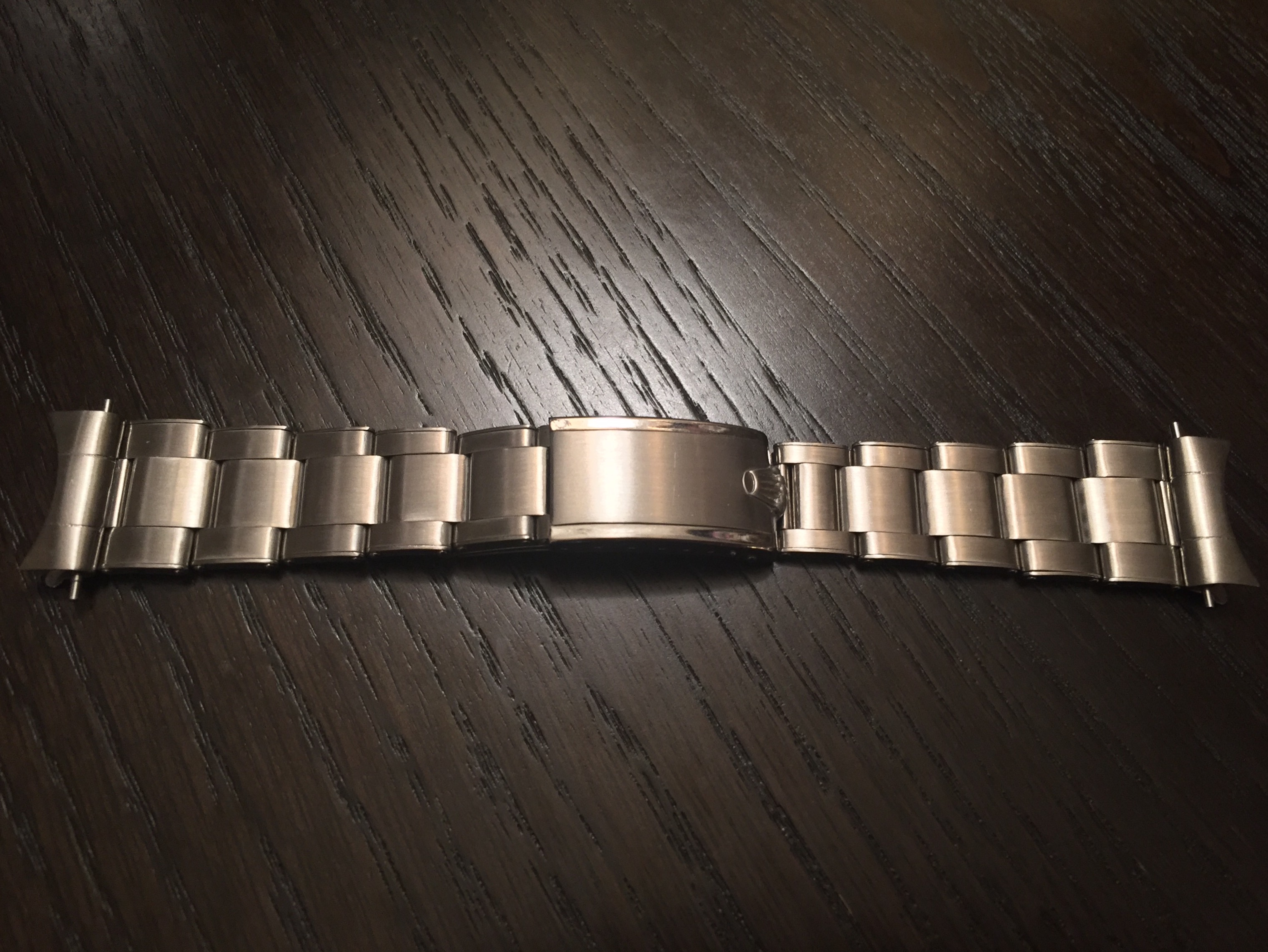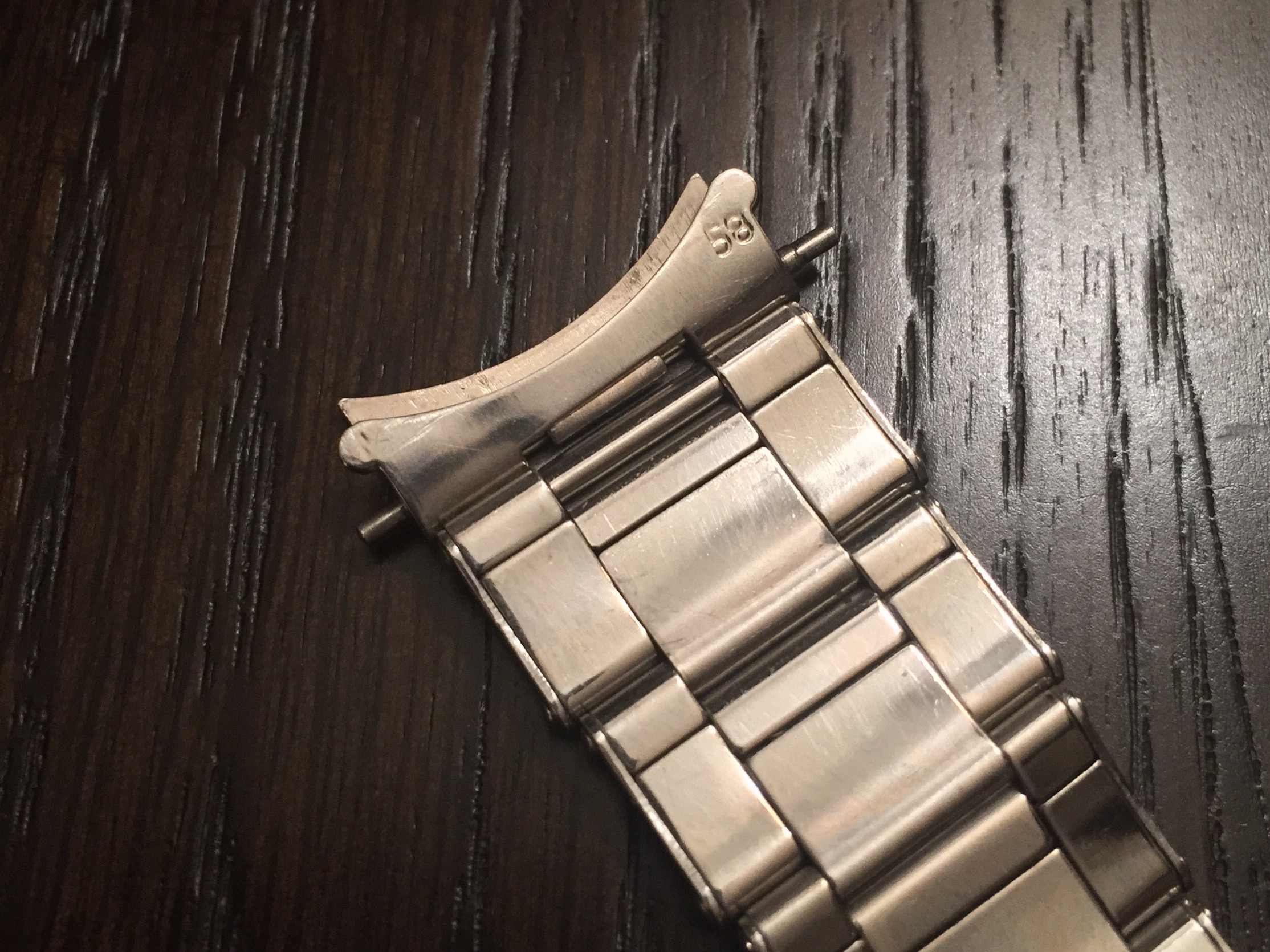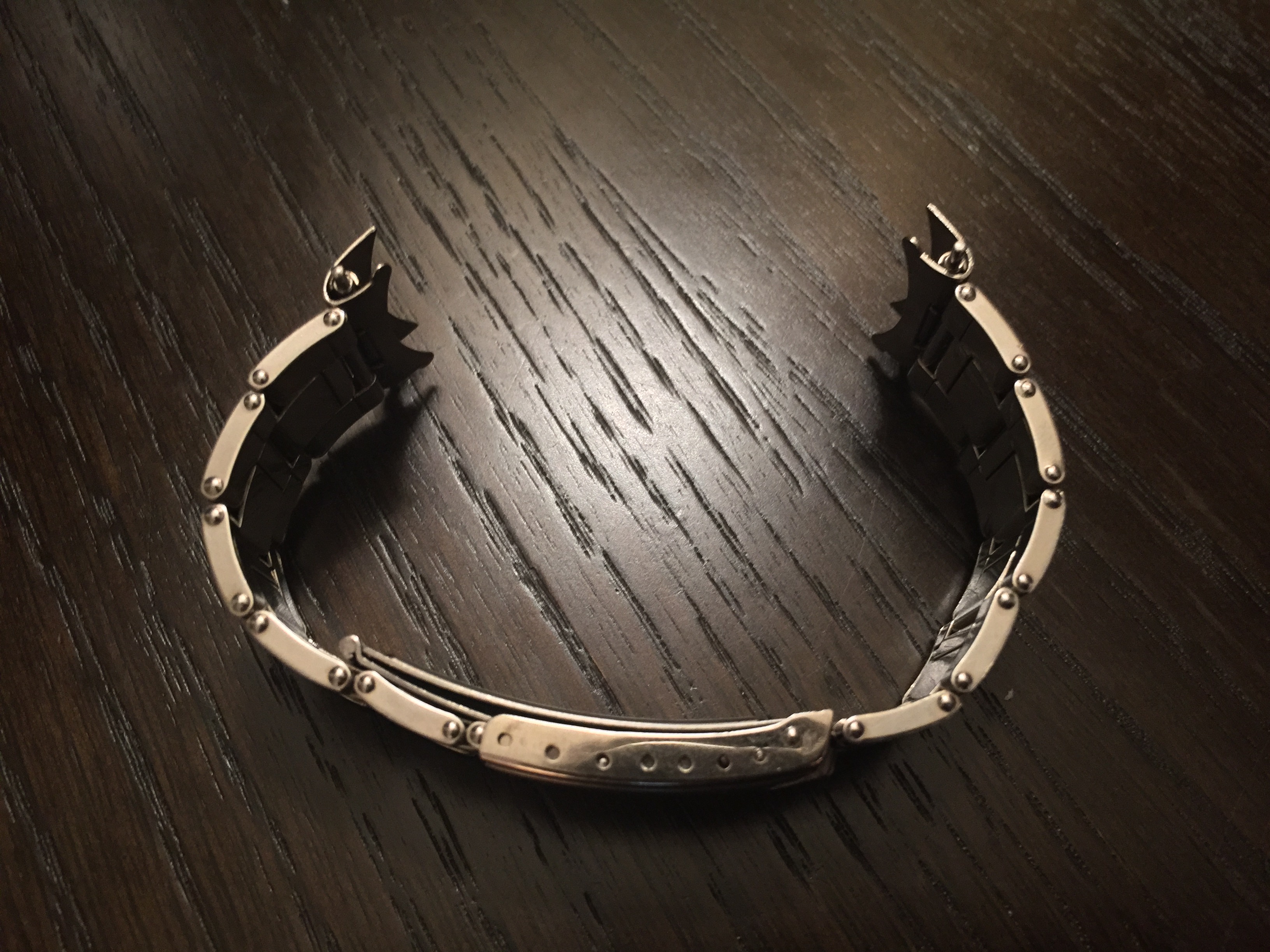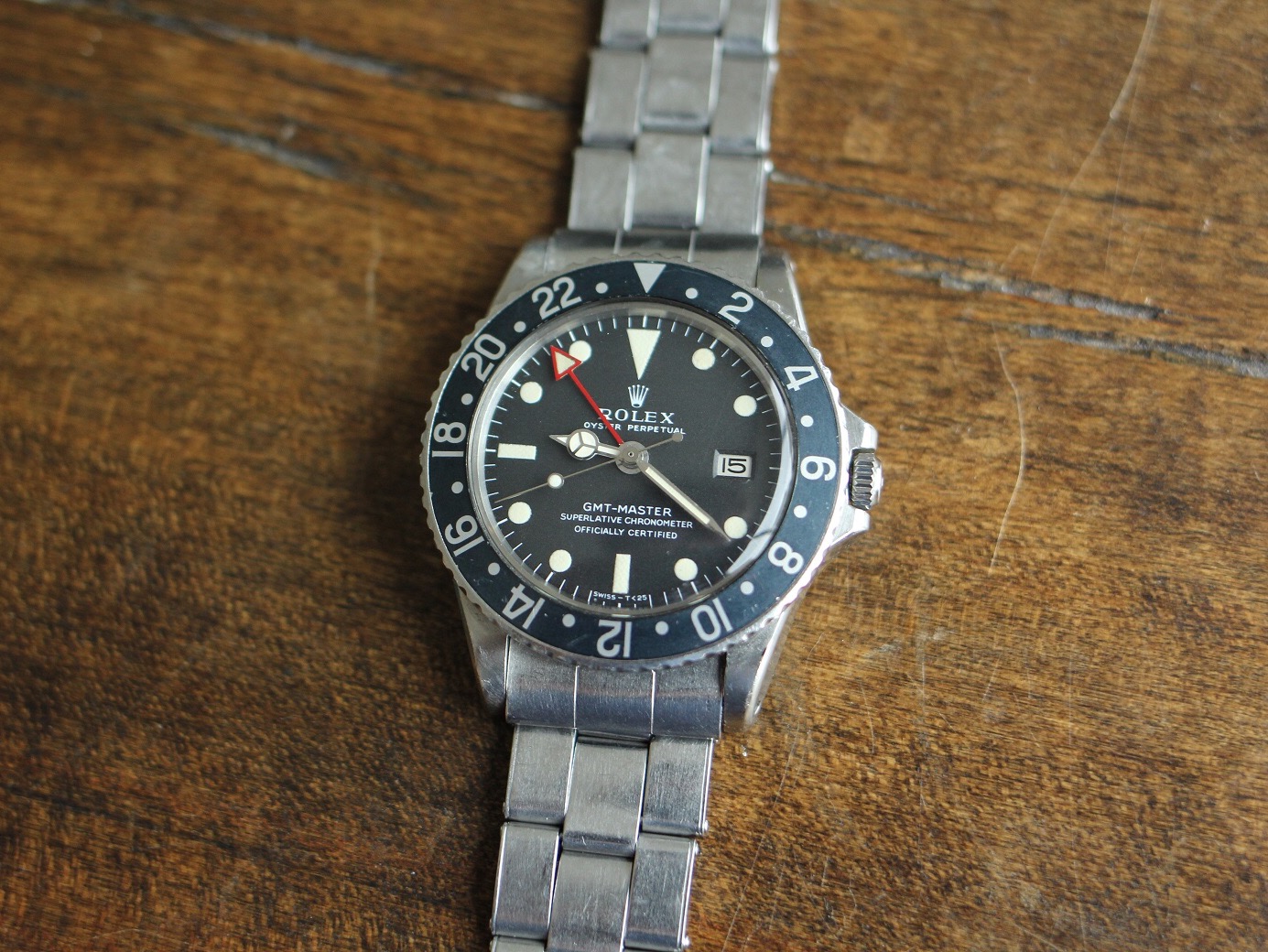The 1675 came on several different bracelets over the years. Initially offered only on the oyster rivet bracelet, the jubilee bracelet later became an option and the rivet evolved to the folded-link type. There were different end-links available at the time of sale and the bracelets were often put on by the retailers with no concern for correctness. Hence, while the 58 (and later 280 and 580) end link is the ‘correct’ end link of the GMT, original examples can come with other end links. Of note, Hodinkee did a wonderful retrospective on the oyster bracelet here, it’s filled with interested facts on the evolution of the most famous bracelet in horology.
Oyster Rivet Bracelets
- 7206 rivet bracelet with 58 end links (abbreviated ‘EL’)
- 6636 rivet bracelet with 58 EL (expandable spring links)
- C&I rivet bracelet with unlabeled EL (for watches from the USA)
Notes: Introduced in 1954, the 7206 and the 6636 are Swiss bracelets that are favored for their fit over the C&I. The C&I was purportedly made by Rolex USA because of the import duty associated with importing the swiss versions. All three bracelets come with 12 links (7 on one side and 5 on the other). The reference number – 7206 and 6636 – are stamped on the center link closest to the end link on the side with 7 links (but this practice did not start until ~1963). The rivets on the 7206 and 6636 are solid whereas the C&I bracelet rivets have holes in them. The unlabeled end links on the C&I are also flatter and longer than the 58 end links, leading to a less flush fit than their Swiss counterparts. Despite the introduction of the folded-link 7836 at the end of the 1960s, C&I bracelets with date stamps into 1977 are seen.
6636 w/58EL
7206 w/58EL
C&I
Other Bracelets
- 7836 folded-link oyster bracelet with 280 end links
- 78360 solid-link oyster bracelet with 580 end links
- 6251 jubilee bracelet with 50 end links (Hecho en Mexico can be seen)
- 62510H jubilee bracelet with 550 end links
Notes: The 7836 was the next generation of oyster bracelet and was introduced at the end of the 1960s. This is not to say that all GMTs after 1970 should be on a 7836 but that is the point at which they are seen. As noted above, there is a large overlap as C&I rivet dates can be seen into the late 1970’s. The 78360 solid-link was introduced in 1975-76 and can be seen on GMTs from there until the end of the production line, again having a large overlap with the folded-link bracelet. The 6251 jubilee is swiss made and has open sides to the links, whereas it’s replacement, the 62510H, has solid sides.
Pictures Forthcoming











